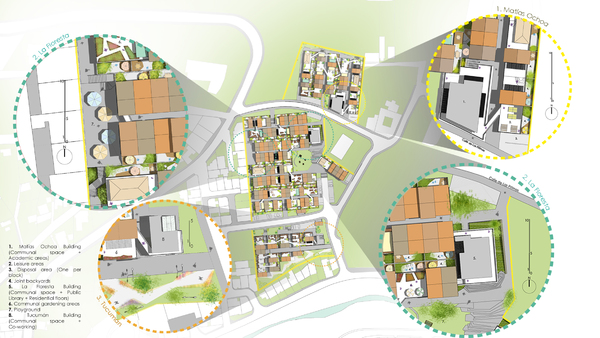Social housing in Latin America has always been marked as a poor development of housing units that expand cities in uncontrolled ways, with clones of houses that only disrupt the landscape, excluding citizens from the urban and society. Cuenca is not the difference, it has always had social housing developments and they have always been directed to low-income families, although many, ended with average-income households that managed to get loans to acquire their homes. While the acquisition and distribution is linked to institutions and government’s control, these are also responsible of the way Cuenca has grown in the last decades. Multiple developments are proposed as solutions of housing demand, when alternatives are being overlooked, such as redesigning or refurbishing existing projects.
Many of the social housing projects present problems regarding over-crowed houses, criminality and an important lack of public space. The bottom line is lack of space. These projects are being design to make its residents use more transportation to move around the city, for they are located farther from the commercial zones. Additionally to an important reduction of the living area to give space to more houses, which results in housing supply based on quantity and not quality.
Therefore this thesis is focused on the refurbishment of a social housing project, more specifically: Miraflores; where architectural and urban interventions will enhance the quality of life. As the title says “Giving back Flores to Miraflores”, this thesis focuses in returning more life and quality to this project, focusing on its community and landscape.
Dissertation: https://issuu.com/arq.ancllb/docs/200810_diss_draft_ac
Design Thesis: https://issuu.com/arq.ancllb/docs/200812_sc_design_thesis_ac


